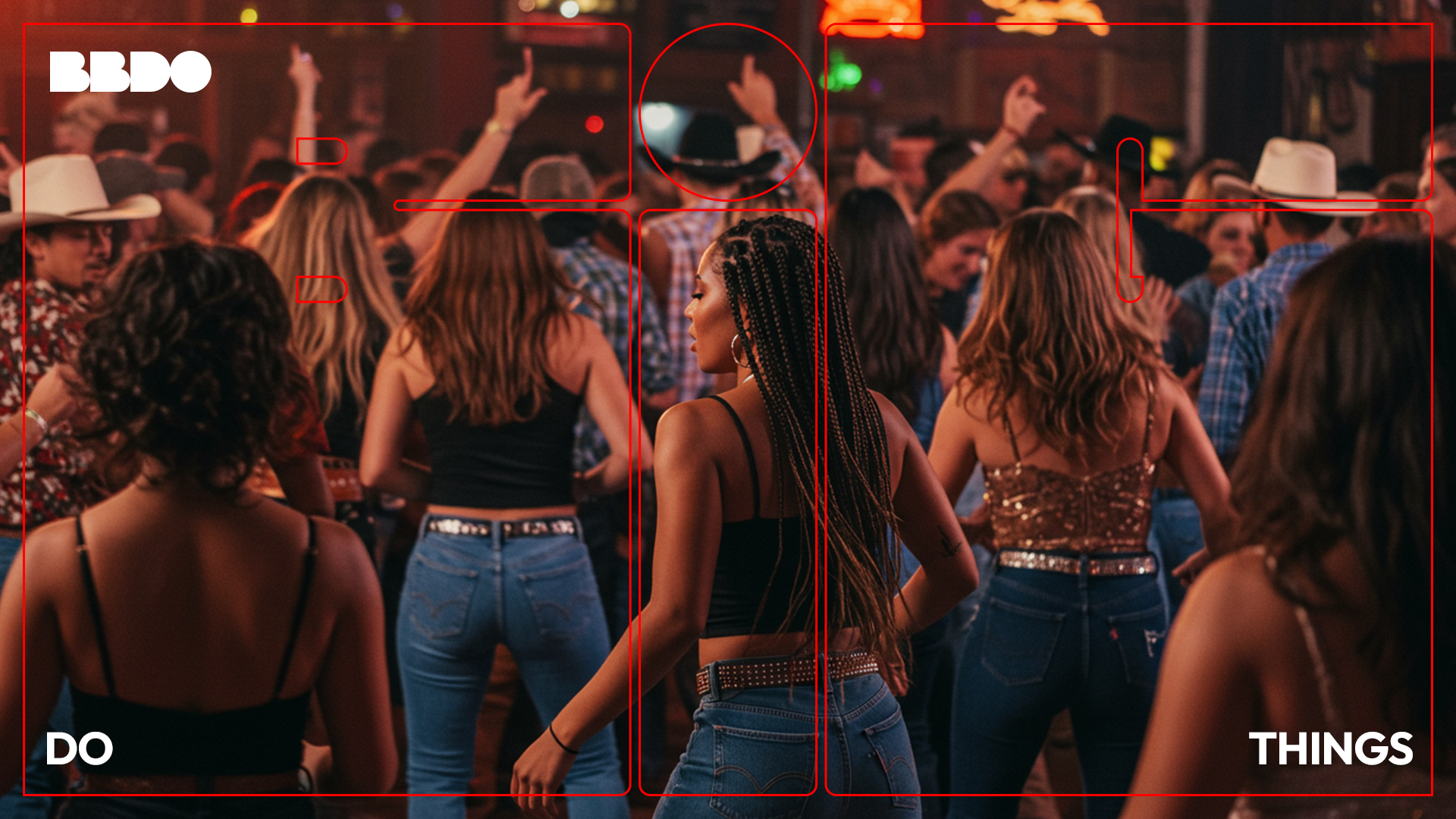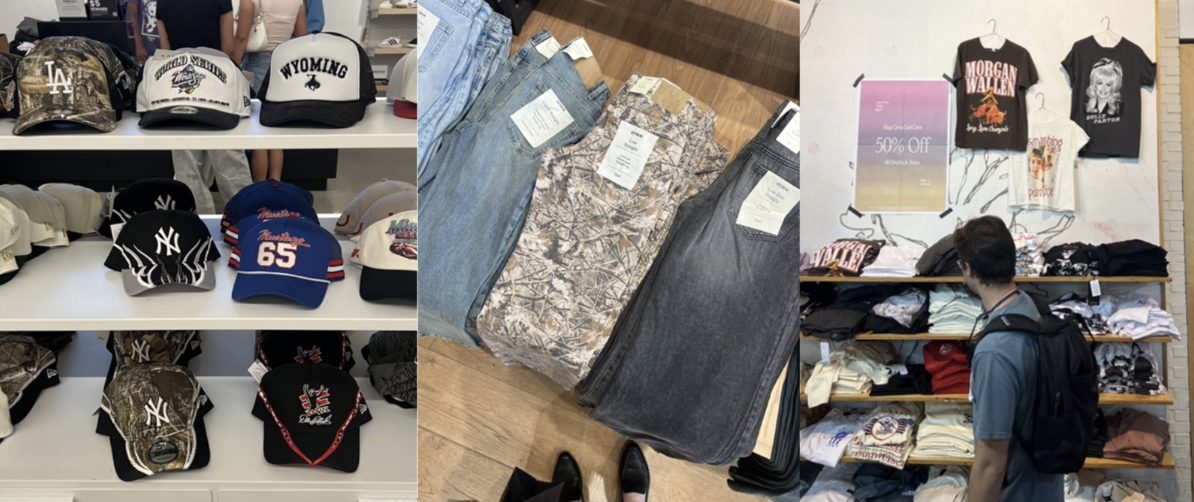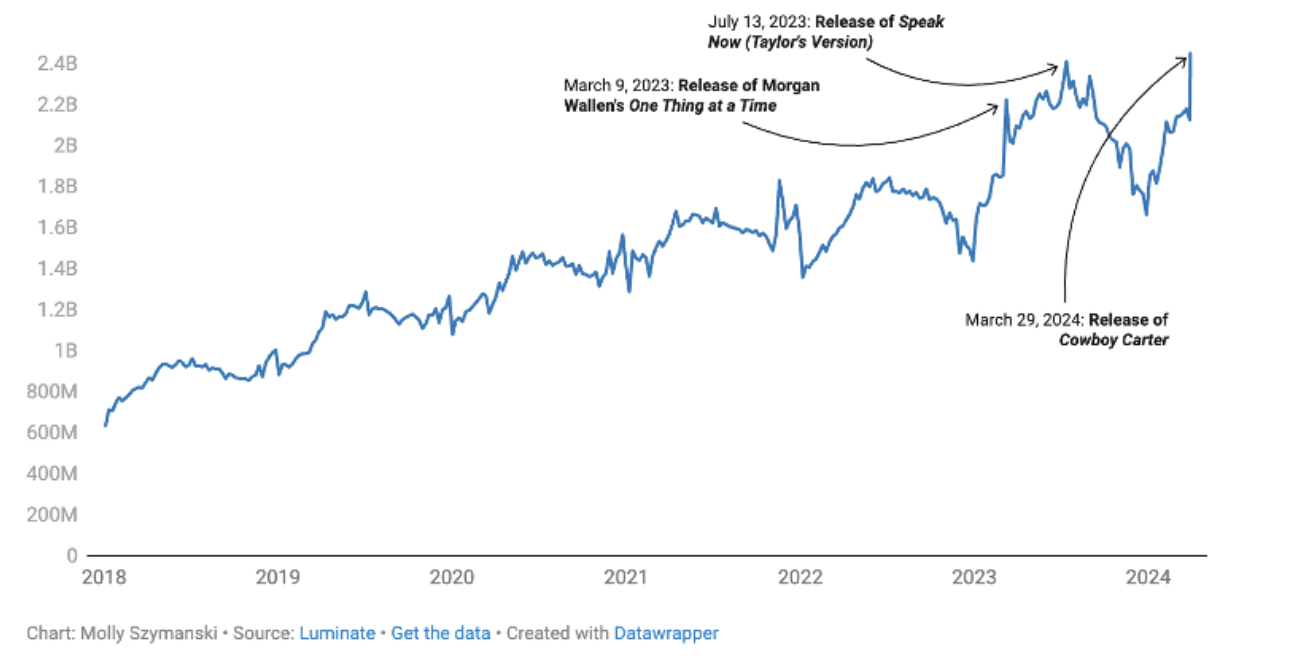Why Rural Culture is now Pop Culture

-
Brianna Holmes (she/her)
-
Strategy Director
-
July 8, 2025

Shopping for Beyoncé’s Cowboy Carter tour in finale Atlanta, I was stopped in my tracks by a group of teens. They rocked a mix of mullets, camo prints, Lululemon leggings, and all. Standing between shelves of bedazzled cowboy hats and snakeskin boots, it hit me: rural culture codes aren’t just trending, they’ve gone mainstream.

I grew up in a pocket of Florida that while north, felt distinctly southern. We passed farms to get to my soccer games. High school classmates spent their weekends hunting. Neighbors wore camo, Carhartt, and proudly blasted country music in lifted F-350s on their way to work.
I say all this to set up that after leaving this pocket of the country, I saw how the outside world looked at rural culture. Country music wasn’t something the bleeding-edge culture makers you envied on social media were listening to. Camo wasn’t trendy. Mullets were worn by rednecks, not the popular guys.

– Coors Banquet, the blue-collar beer in those iconic stubby bottles, saw 26% YoY growth in 2024 and is officially the favorite beer of Gen Z.
– Carhartt was ranked as the #1 casual brand for men and #3 for women in 2024 (LLEK Consulting).
– Country line dancing bars are popping up left and right, including in the UK.
– In the last six years, country music streaming has steadily increased by 287%, supercharged by artists like Morgan Wallen, Taylor Swift, Zach Bryan and Beyonce, a change for the genre which has long been consumed most via radio by older listeners.

Even our favorite pop stars of the moment from Post Malone to Chappell Roan and even T-Pain are bringing twang and strings to their tracks. Sabrina’s ‘Short n’ Sweet’ album has country influences all over the record, and her newly released earworm ‘Manchild’ is no different.
Symbols, lyrics, flavors and styles from a familiar, simpler, lived in time can feel like a healing salve on the open wound of change these past few years have brought.
A pandemic. Global wars. Rising costs of living beyond our control. The looming threat of AI taking our jobs. When the future feels unstable, culture often looks backward.
During the Great Depression, Americans turned back to comforting entertainment from the past, from swing music to classic folk songs like the “Red River Valley” from the 19th century.
When social upheaval sparked in the late 1960s, 1950s nostalgia symbols reappeared, creating classics like ‘Grease’ and reviving cravings for homey meals and American diner foods.
We’re seeing that now. Rural codes, once dismissed as uninteresting or niche, offer something broader culture hasn’t lately: stability, tradition, and a sense of place. It’s not regression, it’s reconnection to a time we feel we know.
Everyday Americans don’t want to push the envelope right now, they need comfort. Our recent BBDO BlindSpots study found “comfort” is America’s #1 need across urban, suburban, and rural lines. People everywhere are deeply craving security and belonging.
As marketers, we often feel the pressure to push culture forward. But right now, many Americans aren’t asking for what’s next, they’re asking to feel known.
In today’s cultural landscape, relevance isn’t about novelty, it’s about resonance. The brands winning today are the ones who don’t just chase trends, but honor the values and rituals people are already holding close. And today, that gives them the ways to feel the comfort they’re needing.
Is your brand pushing novelty or offering real comfort?